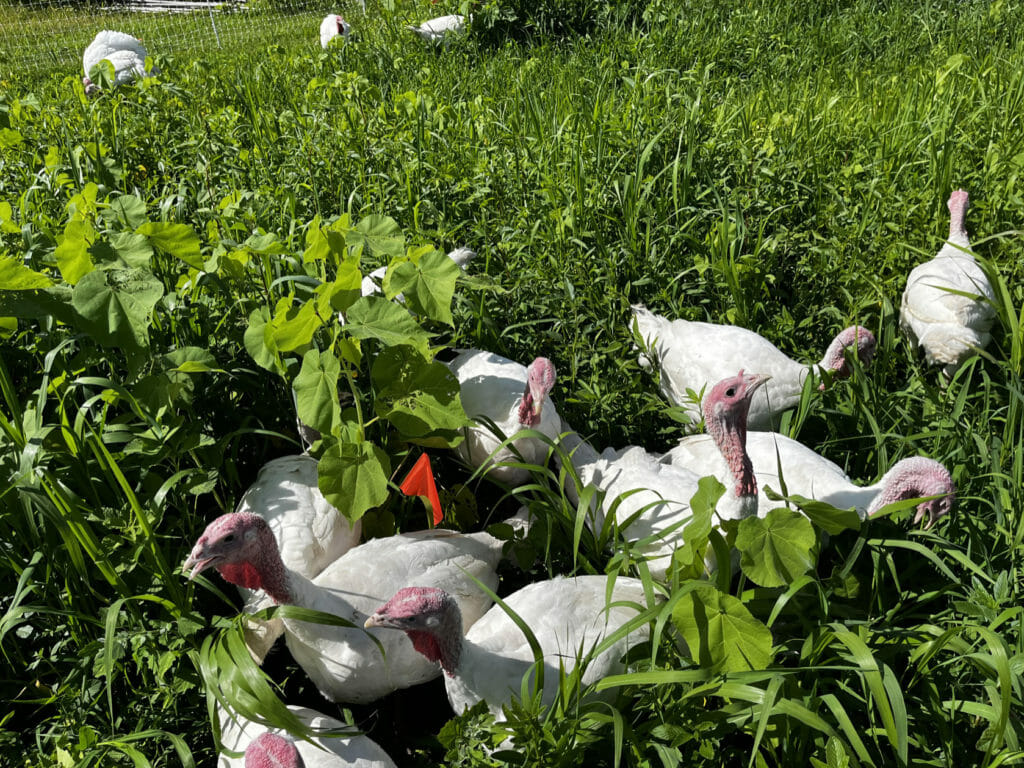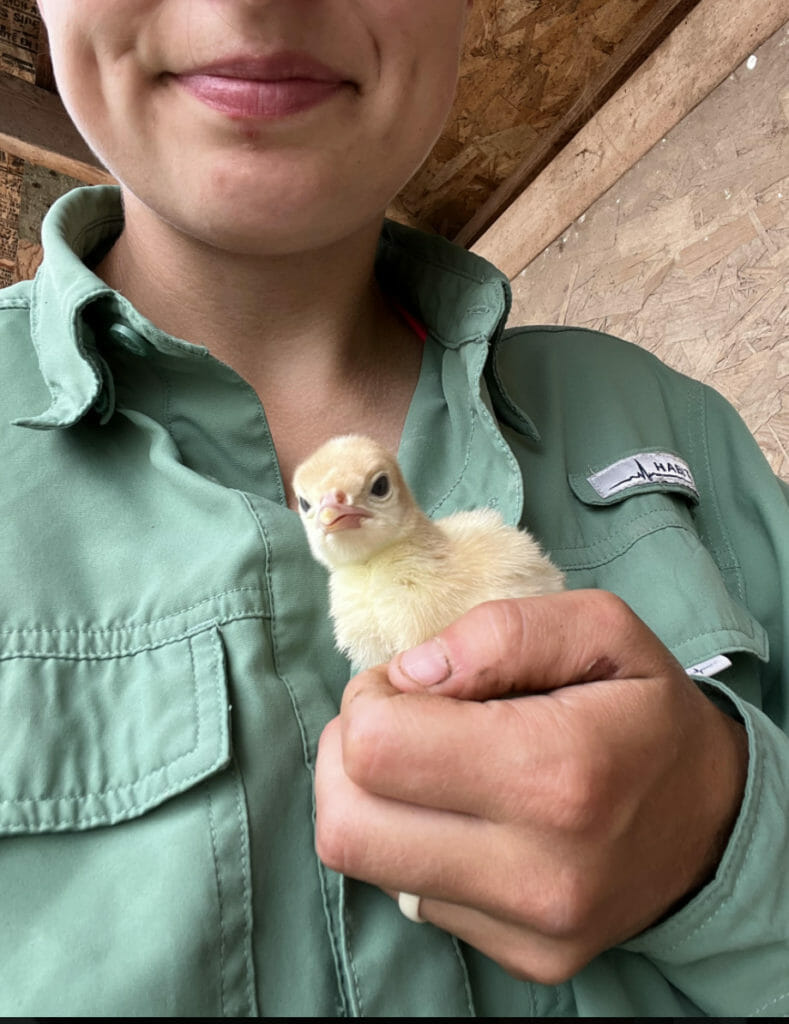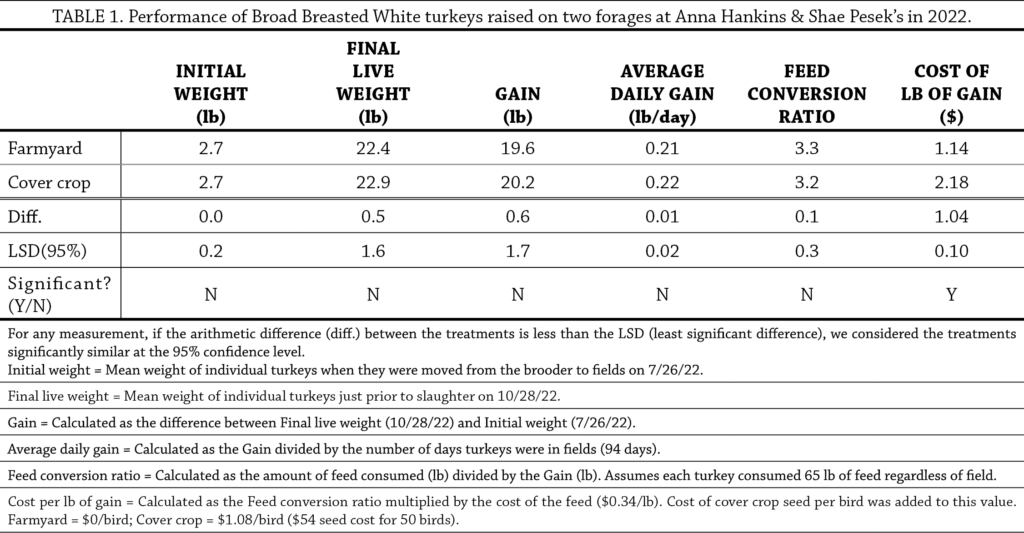This research was funded by the Walton Family Foundation.
In a Nutshell:
- Anna Hankins & Shae Pesek typically raise Broad Breasted White turkeys in the farmyard consisting of grasses, clovers and weeds.
- They were eager to see if there was an advantage to raising turkeys on a cover crop mix because such an advantage might encourage them to increase their use of cover crops on the farm. Any advantage would have had to compensate for the cost of the cover crop seed in order to justify the practice.
Key Findings
- Between the farmyard and the cover crop mix, turkeys performed similarly in terms of final live weight, gain and average daily gain.
- There was an economic advantage to the farmyard because it was less expensive (no cover crop seed cost), and turkeys performed similarly in either area.
Methods
Design
To determine the effect of forage type on performance of Broad Breasted White turkeys, Hankins & Pesek compared two scenarios:
- Farmyard – Turkeys graze farmyard (crabgrass, clover, weeds) and have free choice access to grain and water. Typical practice.
- Cover crop – Turkeys rotationally graze an annual cover crop mix (annual ryegrass, daikon radish, crimson clover, kale, rapeseed, sunflower, buckwheat) and have free choice access to grain and water. Experimental practice.
Hankins & Pesek seeded the cover crop mix, which cost $54, on May 21. One hundred turkeys arrived to the farm on June 28 and placed in brooders. Hankins & Pesek assigned 50 birds to the Farmyard treatment group and 50 birds to the Cover crop treatment group. A subset of 12 birds from each treatment group was monitored throughout the trial (24 birds total in experiment). Birds were moved from the brooders to the Farmyard or Cover crop fields on July 26 where they were raised until slaughter on Oct. 28. The Farmyard and Cover crop fields each measured approximately ¼ acre. Hankins & Pesek estimated that each bird, regardless of group, consumed 65 pounds of feed between July 26 and Oct. 28. Cost of feed was $0.34/lb.
Measurements
The weight of each individual turkey in the experiment was recorded the day they were moved from the brooder to either the Farmyard or Cover crop fields on July 26. To determine the average final live weight, each individual turkey was weighed on Oct. 28 just before slaughtering.
Data analysis
To evaluate the effect of forage on final live weight, average daily gain, feed conversion ratio and cost per pound of gain for turkeys, we calculated the least significant difference (LSD) using a t-test. If the difference between the average weights of the two treatment groups was greater than or equal to the LSD, we considered this a statistically significant effect. On the other hand, if the difference resulting between the two groups was less than the LSD, we considered the groups to be statistically similar. We used a 95% confidence level to calculate the LSDs, which means that we would expect our findings to occur 95 times out of 100.
Results and Discussion
Final live weight, gain, average daily gain and feed conversion ratio were statistically similar between treatment groups (Table 1). In other words, the turkeys raised on the Farmyard performed equally well as the turkeys raised on Cover crop field. There was an economic advantage to the Farmyard because it was less expensive than the Cover crop. This economic advantage (cost per lb of gain) was due to the cost of the cover crop seed ($54 or $1.08 per bird); the Farmyard did not incur this cost.
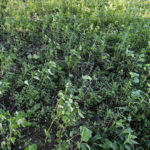
The cover crop mix (annual ryegrass, daikon radish, crimson clover, kale, sunflower, buckwheat) on July 10, 2022.
Hankins shared some lessons learned from trying to rotationally raise turkeys on an annual cover crop mix; namely that turkeys tend to bowl through temporary fence (netting) and access cover crops in adjacent paddocks before intended. “The other thing that we learned and realized we didn’t know until we didn’t know,” Hankins added, “is that it was very hard to estimate how much cover crop to plant or at what speed they would eat them down.”
Conclusions and Next Steps
Though raising Broad Breasted White turkeys on cover crops did not improve the birds’ performance compared with Hankins & Pesek’s typical practice of raising the birds on the existing farmyard, they took away some valuable observations. “This trial made us realize that the quantity of forage the birds can and will eat is vastly different than we anticipated,” Hankins said. She wonders how the turkeys would have performed if they could have dedicated more than ¼ acre to cover crops for raising the birds. Hankins also noted the importance of honing their practices and costs for pastured poultry enterprises on their farm; especially for turkeys which can come with a relatively large profit margin. “It feels like it’s worth the time and resources to dive into trials this one,” Hankins said. “The most valuable part of this trial was learning about turkey trial design. It also made us dive into looking at other resources and we realized that there’s a real hole that could be filled in terms of sharing knowledge about pasture raised turkeys at scale.”
Appendix – Trial Design and Weather Conditions
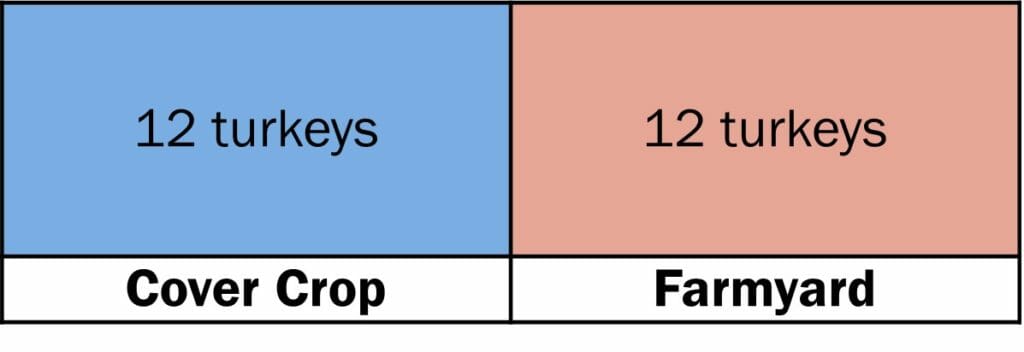
FIGURE A1. Anna Hankins and Shae Pesek’s experimental design consisted of two groups of turkeys, each raised on either farmyard or cover crops. This design allowed for statistical analysis of the data.
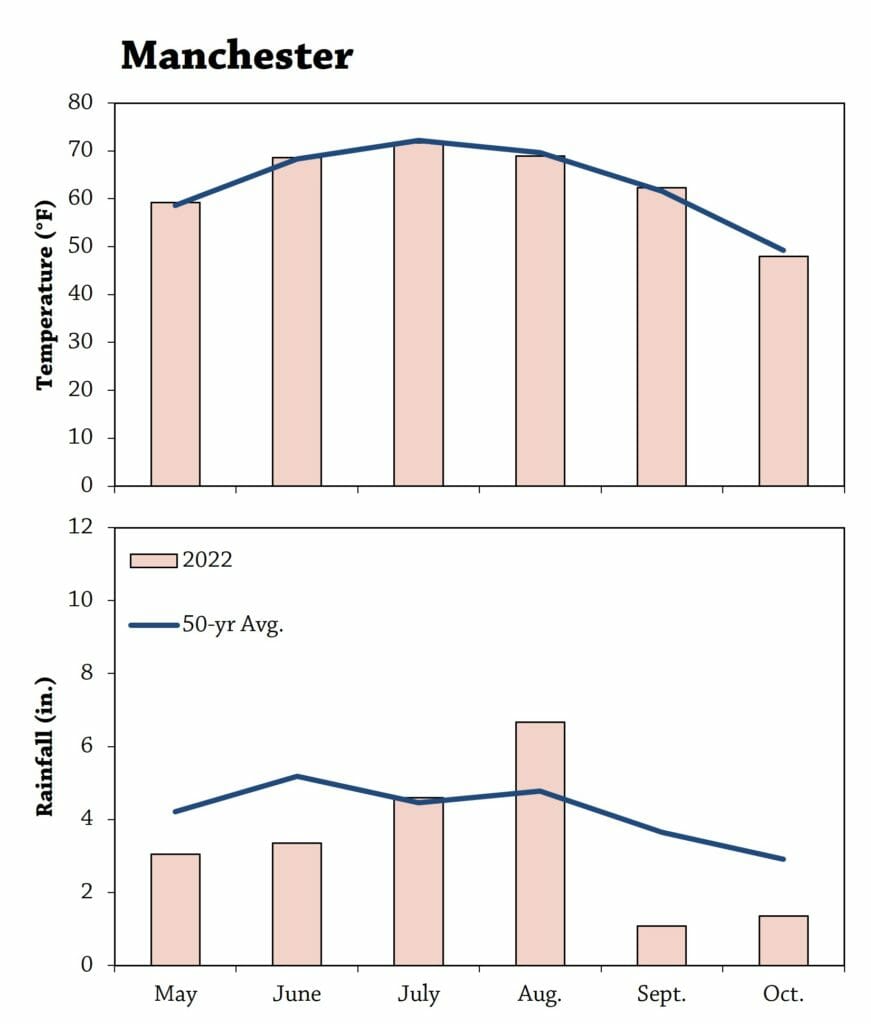
FIGURE A2. Mean monthly temperature and rainfall during the trial period and the long-term averages at Manchester, the nearest weather station to Hankins & Pesek’s farm,[1]
References
- Iowa Environmental Mesonet. 2022. Climodat Reports. Iowa State University. http://mesonet.agron.iastate.edu/climodat/ (accessed December 2022).


